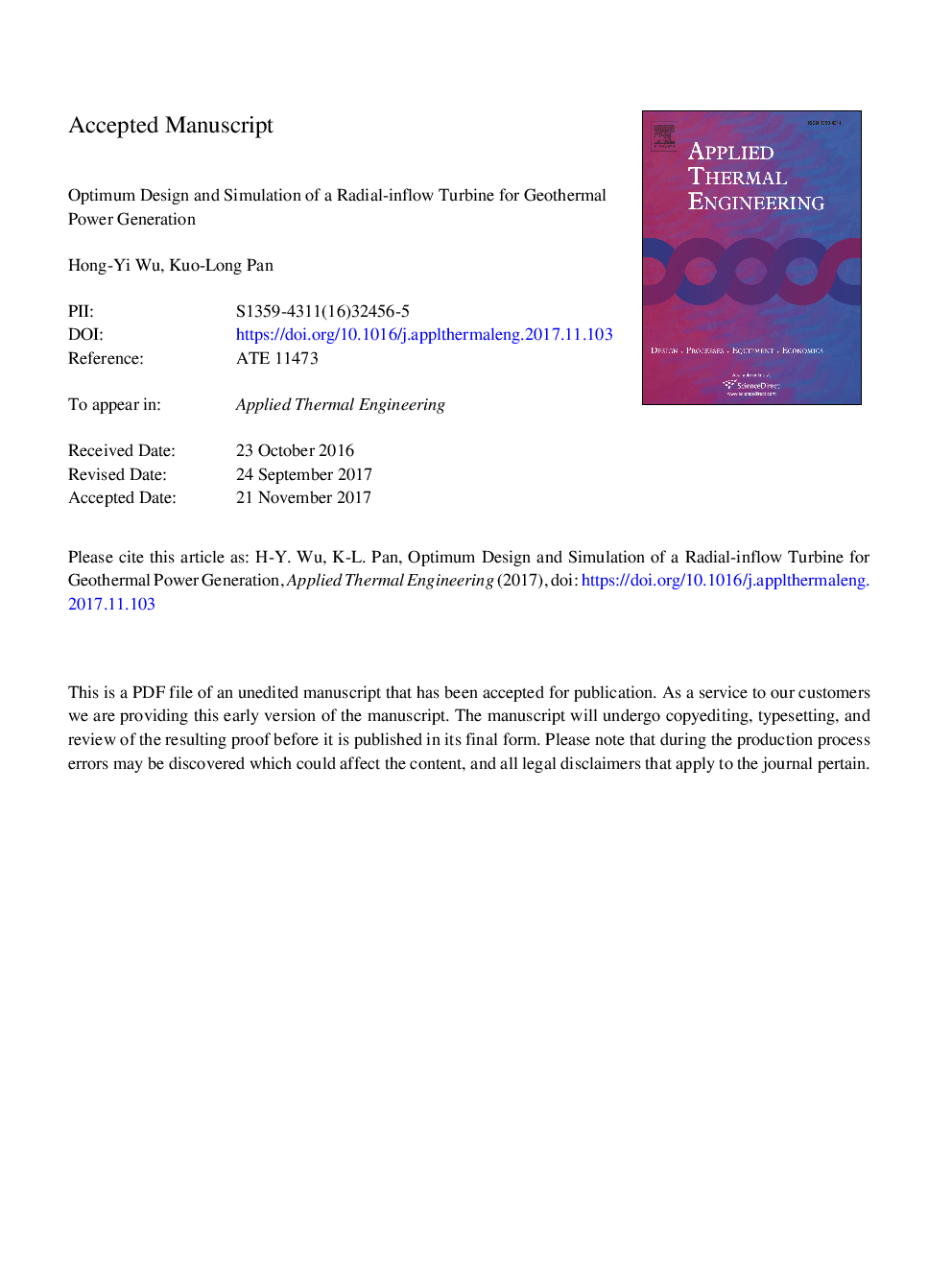ترجمه فارسی عنوان مقاله
طراحی بهینه و شبیه سازی یک توربین شعاعی ورودی برای تولید انرژی زمین گرمایی
عنوان انگلیسی
Optimum design and simulation of a radial-inflow turbine for geothermal power generation
| کد مقاله | سال انتشار | تعداد صفحات مقاله انگلیسی |
|---|---|---|
| 146043 | 2018 | 42 صفحه PDF |
منبع

Publisher : Elsevier - Science Direct (الزویر - ساینس دایرکت)
Journal : Applied Thermal Engineering, Volume 130, 5 February 2018, Pages 1299-1309
ترجمه کلمات کلیدی
چرخه رنکین ارگانیک، توربین بادی شعاعی، انرژی زمین گرمایی،
کلمات کلیدی انگلیسی
Organic Rankine cycle; Radial-inflow turbine; Geothermal energy;

